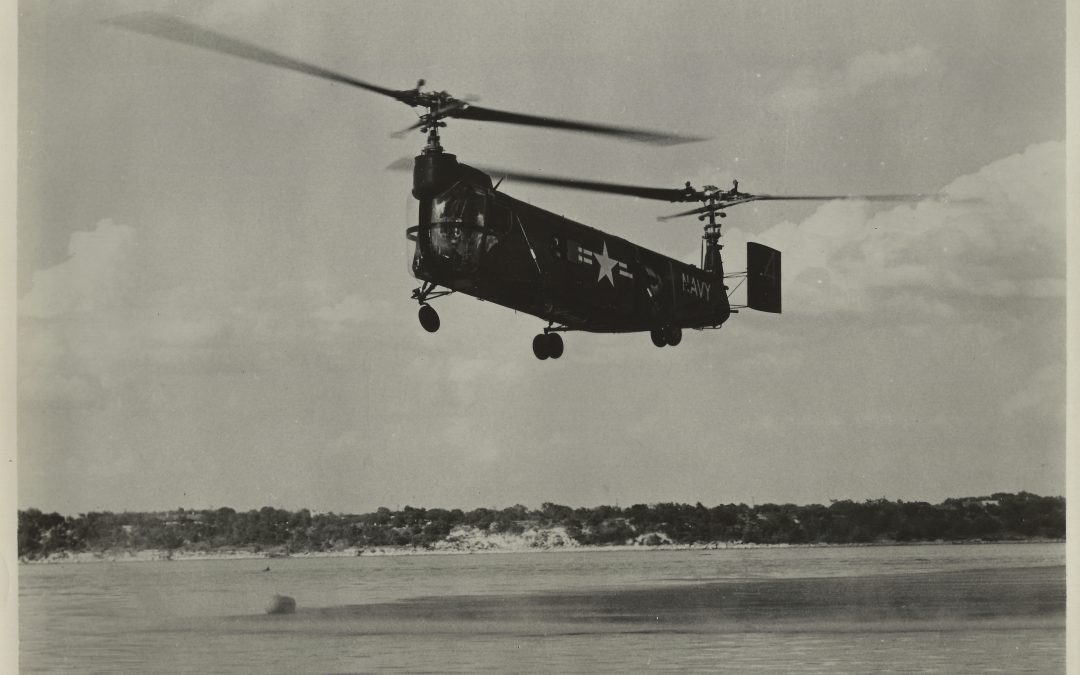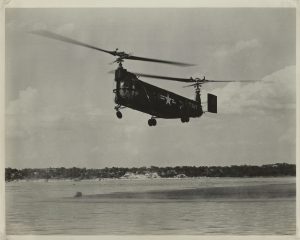My photo of Bell helicopter’s first/only/ever tandem rotor helicopter model ever produced. Designed to handle the heavy and primitive ASW dipping sonar of its day, it was designated HSL-1 for helicopter, anti-submarine warfare, Bell model 1. The civilian designated “Model 61” came about as a result of operational tests by VX-1 off Key West involving their inventory of utility helicopters and dipping sonar. Significant power limitations while hovering in a hot, high DA environment with the sonar dome deployed revealed that the Navy required a dedicated, purpose-built helicopter for ASW that could also fulfill various other SAR/utility requirements as needed. Bell surprisingly managed to beat out Piaseki with this design. While the Pratt and Whitney R-2800 engine proved capable of overcoming the power and temperature concerns, it was much too loud to be practical for ASW. The R-2800 was the same engine used on the likes of Corsair, Hellcat, and Thunderbolt fighters of WWII, and was never intended to be quiet.
The Navy accepted its first HSL into the inventory in August of 1954 and immediately flew it to Pax River for use in further operational testing. The airframe pictured here, “Ship Four” as it was called, was the first production HSL-1 Bell produced. One source said that this aircraft was used to successfully test and qualify the autopilot for use with the dipping sonar in 1954 over a lake north of Hurst, TX. It was about that same time that the Navy essentially scrapped the program. Only a handful of the 50 produced were used for testing and evaluation of mine warfare equipment in Panama City. The remainder were placed directly into storage upon arrival at their respective squadrons, apparently never to be flown again.



Recent Comments